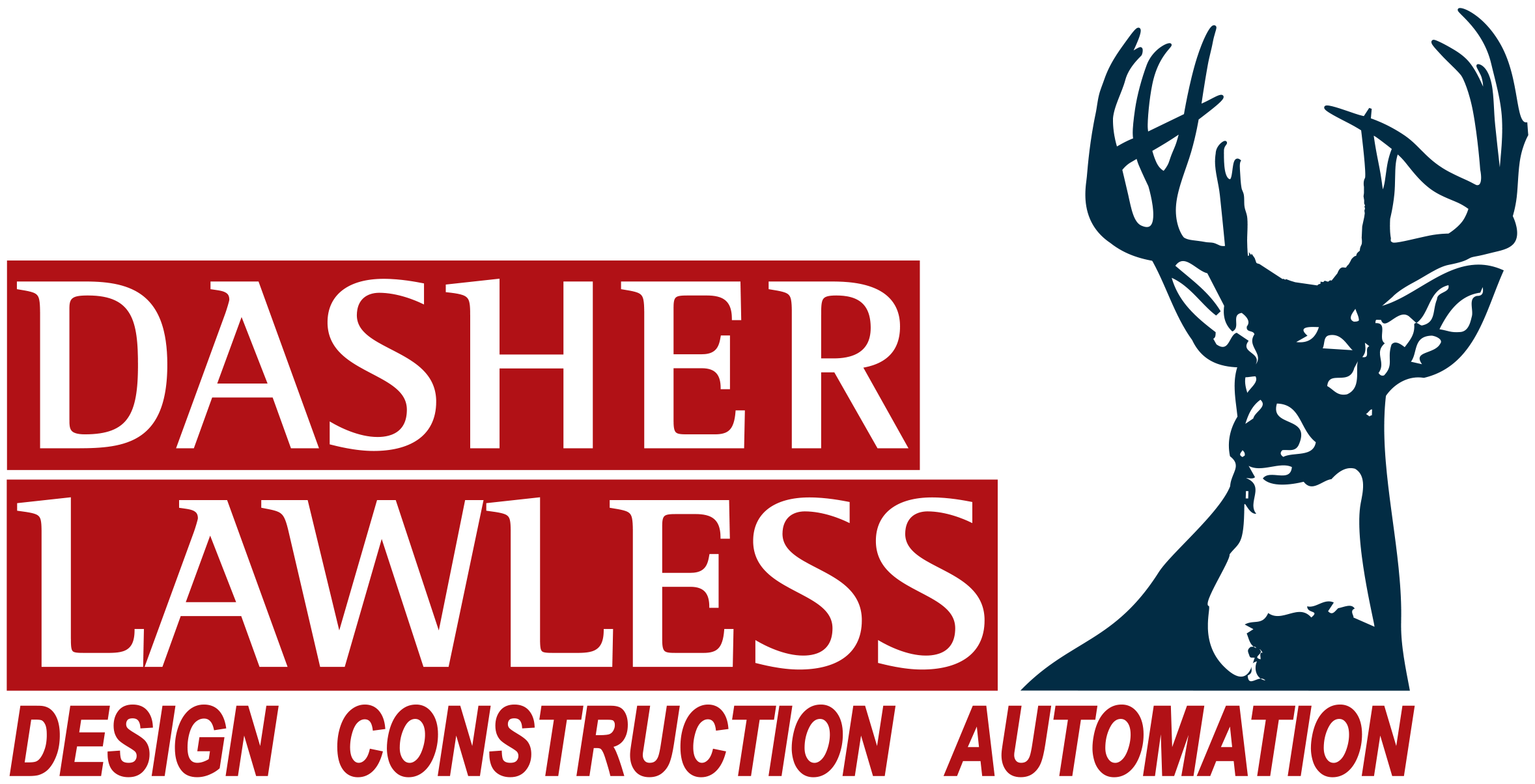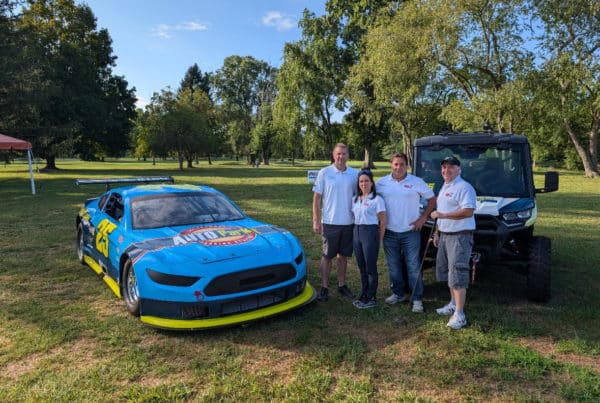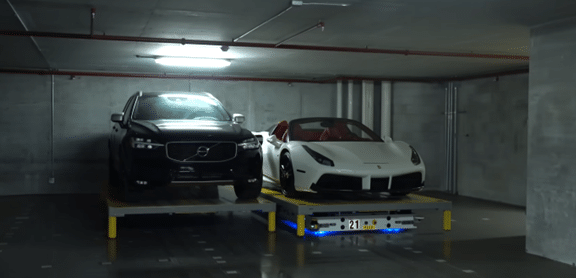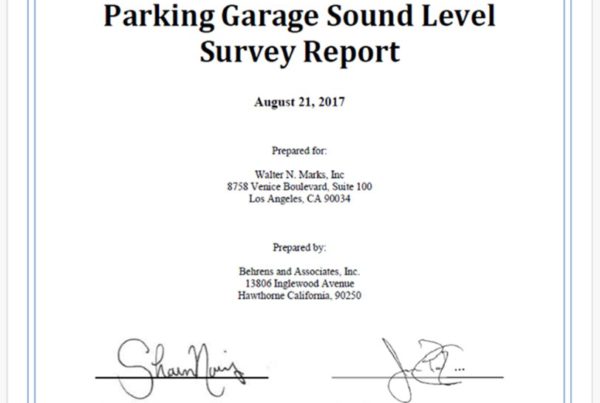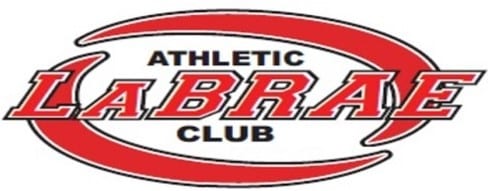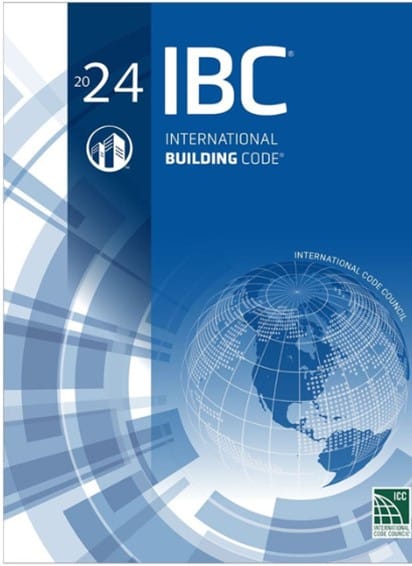
Inaugural AUTOParkit System Pivotable to IBC’s APS Standard Automated Parking Systems (APS) are revolutionizing how cities approach vehicle storage.
These systems employ mechanical lifts for vertical movement, shuttles operating on rails for horizontal movement, and conveyors for linear movement to store/retrieve vehicles without human drivers navigating tight spaces inside a parking garage. Users simply drop off their vehicle at a Load Bay, and the system stores or retrieves it automatically. This automation offers remarkable efficiencies in space usage, safety, and accessibility.
Before the 2021 Edition of the International Building Code (IBC), APS was unaddressed in standardized building and development codes, requiring architects and engineers to navigate a patchwork of interpretations and reliance on local approvals. The IBC 2021 brought a significant shift with Section 903.2.10.2, which explicitly requires specially engineered automatic sprinkler systems throughout mechanically accessed enclosed parking garages. This requirement elevated fire protection standards in APS, ensuring a consistent baseline for life safety that had been lacking previously.
USAGE Classifying APS typically falls under Group S-2 (“storage of motor vehicles—low hazard”), but designers and code officials often refer to Chapter 23 of the IFC for guidance on fire separation and ventilation since APS structure challenges resemble high-pile or rack storage. Ventilation considerations were critical: although APS demand less exhaust dispersion than conventional garages, due to a lack of engine operation, smoke control and air circulation in transfer zones remained essential for life safety.
ACCESSIBILITY Accessibility also remained a non- negotiable concern. While the interior of an APS remains off-limits to the public, the transfer areas (Load Bay) must meet ADA standards. Proper control panel height, clear paths of travel, and safe ingress and egress are all important considerations. This ensures that users with disabilities can operate the system and access their vehicles independently.
The 2024 IBC built upon this foundation, in particular easing the burden on structural design. Section 1604.5’s
amendments provide an exception: large parking structures, including APS, can be assigned to Risk Category II – even
if the occupant load would normally suggest Risk Category III (unless they house emergency vehicle operations or
Copyright 2025 – Company Confidential –READY FOR RELEASE form critical egress routes for higher-risk buildings). This was a welcome change for designers, as it reduced seismic and robust demands, making APS more feasible and cost-effective in seismically active jurisdictions.
SAFETY The 2024 IBC’s fire and accessibility provisions are better detailed, but in general, the sprinkler and safety standards introduced in 2021 have remained intact. Planners and engineers should still reference Section 903.2.10.2 and ensure transfer zones meet ADA requirements, while harnessing the new Risk Category II classification to optimize structure design and cost.
HISTORY Los Angeles, a historically cautious municipality, provides a cautionary tale of early frustrations followed by successful approvals. For years, fully automated parking systems struggled to meet the high safety thresholds of the LA Department of Building and Safety. But in 2012, AUTOParkit collaborated with LADBS to create the first Building Code in the United States directly applicable to APS. Soon thereafter, AUTOParkit built the inaugural APS in LA at a multi-family project named The Savannahs. While it was a small APS installation, with a total of 16 stalls, it was code- compliant and received approval from LADBS. This breakthrough was based on a hallmark of the AUTOParkit team: proactive collaboration. Our Architecture team actively engaged directly with city fire and building departments to address concerns around fire suppression, egress, ventilation, structural safety, and early warning detection. This effort proved that jurisdictions—once hesitant—were increasingly open to APS when applicants provide detailed, engineered solutions that meet IBC, IFC, and local fire code requirements. The process requires thorough documentation, safety analysis, and often performance-based design strategies, but it’s becoming standardized enough that APS approvals are increasingly viable. Automated Parking Systems represent a significant evolution in urban infrastructure, marrying standard factory automation controls with building safety standards. The 2021 IBC marks the first time such systems received explicit code recognition—most notably with mandatory sprinkler systems for mechanical-access garages. The 2024 IBC further propels APS’s feasibility by relaxing structural risk designations. Yet, the real-world feasibility of APS hinges on local jurisdiction engagement. The approval pathway is paved through rigorous, site-specific evaluations aligned with code and safety standards.
NEXT Designers undertaking APS projects should:
1. Reference the 2021 IBC for fire protection (Section 903.2.10.2) and ADA compliance at transfer areas.
2. Leverage the 2024 IBC’s Risk Category II exception for structural optimization.
3. Prepare comprehensive documentation—structural, fire safety, operational—to satisfy AHJs.
4. Engage early and collaboratively with code officials, fire marshals, and engineers.
Through collaboration and adherence to engineering rigor, APS can overcome regulatory hurdles and become a
practical, code-compliant solution for urban parking needs. AUTOParkit is well-versed in working with jurisdictions to
garner approvals for APS’s and stand ready to help clients permit their APS projects.
For more information, see
www.AUTOParkit.com
or contact Shawn Adams at:
sadams@dasherlawless.com
M 630.310.1902
For media requests, please contact Christina Cappello at:
ccappello@dasherlawless.com
O 818.989.1282
